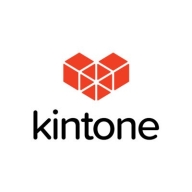

Microsoft Power Apps and Kintone are both competitive options in the realm of application development platforms. Power Apps holds an advantage in flexibility and integration capabilities, while Kintone stands out with its customization and collaboration features.
Features: Microsoft Power Apps offers a robust integration ecosystem, extensive template options, and automation capabilities, making it flexible for enterprise solutions. Kintone provides strong customization features, supports specific workflow designs, and offers enhanced collaborative attributes ideal for tailor-made solutions.
Ease of Deployment and Customer Service: Power Apps offers a straightforward deployment process within the Microsoft ecosystem, benefiting from comprehensive support and resources. Kintone's user-friendly interface and accessible customer service facilitate easy customization and application launch.
Pricing and ROI: Power Apps generally involves higher initial costs due to its extensive capabilities, delivering significant ROI for large-scale operations needing integration. Kintone offers affordable pricing, appealing to small to medium businesses seeking customization without extensive overhead, providing a cost-effective solution with low setup costs.
| Product | Market Share (%) |
|---|---|
| Microsoft Power Apps | 11.8% |
| Kintone | 0.4% |
| Other | 87.8% |

| Company Size | Count |
|---|---|
| Small Business | 30 |
| Midsize Enterprise | 17 |
| Large Enterprise | 50 |
Build, customize, and share powerful enterprise apps at lightning speed. You may never have to call your IT team again with Kintone’s Rapid Application Development tool.
Microsoft Power Apps is a rapid application development software and low-code development platform. The solution consists of a suite of apps, services, connectors, and a data platform. It provides an environment for building custom apps which is suitable for different businesses.
Microsoft Power Apps allows users to not only build applications, but also connect them to Microsoft's other sources, including the underlying data platform Microsoft Dataverse, as well as online and on-premise sources such as SharePoint, Dynamics 365, and Microsoft 365. The applications built using Microsoft Power Apps have a responsive design that makes them suitable for work in browsers and on mobile applications on different devices.
The no-code side of the product makes it suitable for complete beginners to app building, allowing them to easily create fully functional applications with many features. The solution also has a specialized platform for developers where specialists can access data and metadata, create custom connectors, integrate with external data, and apply business logic. The solution allows users to create three types of apps: canvas, model-driven, and portal. They are made using:
Microsoft Power Apps Features
The three different design tools of the solution, Power Apps Studio, App Designer, and Power Apps Portals Studio, come with various features which allow users to utilize the tools. Some of these features include:
Microsoft Power Apps Benefits
The product brings various benefits to organizations and individuals who utilize it. Some of the biggest advantages of Microsoft Power Apps include:
Reviews from Real Users
An IT Specialist (INFOSEC) at a government appreciates this tool because it is low-code, low learning curve, and reduces manpower.
Rafael T., a data engineer at NTT Security, likes Microsoft Power Apps, because it is great for making apps quickly, has helpful support, and integrates with Power BI.
We monitor all Rapid Application Development Software reviews to prevent fraudulent reviews and keep review quality high. We do not post reviews by company employees or direct competitors. We validate each review for authenticity via cross-reference with LinkedIn, and personal follow-up with the reviewer when necessary.